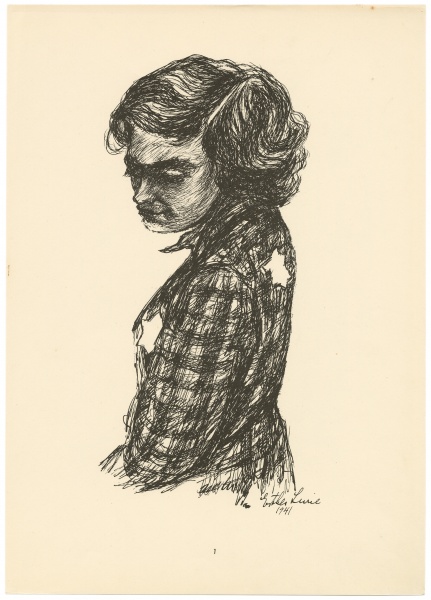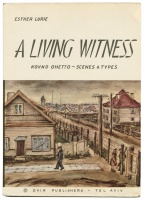

A Living Witness: Kovno Ghetto - Scenes & Types
| Author: |
Esther Lurie (1913–1998)  |
| Created: | 1958 |
| Material: | paper |
| Technique: | printing |
| Dimensions: | 35.50 × 25.50 cm |
Witnesses to crimes. In 1939, the artist Esther Lurie, who had already achieved recognition in Palestine, arrived in Lithuania to visit relatives. However, when the war broke out, she found herself imprisoned in the Kaunas ghetto. For almost three years, she recorded life in the ghetto, and created more than 200 watercolours and drawings. In the early summer of 1944, as the number of deportations to concentration camps was increasing, Lurie asked craftsmen in the ghetto’s pottery workshop to make some large clay pots and hid her works in them. In July 1944, she was transported to the Stutthof concentration camp, and in August she was sent to the Leibitz women’s forced labour camp.
After the war, Lurie returned to Kaunas to look for her work hidden in the pots. Although she did not find them, she never stopped depicting the Kaunas ghetto. She spent much time reconstructing her ghetto works, drawing them from memory or from old photographs, and in 1958 she published A Living Witness: Kovno Ghetto - Scenes & Types, a book of 30 watercolours and drawings. Lurie’s drawings and watercolours were used as historical records during the trial in Jerusalem in 1961 of the SS officer Adolf Eichmann, who coordinated and implemented the plan to exterminate the Jews of Europe, and were accepted by the Supreme Court as proof of the Nazi crimes.
Text author Vilma Gradinskaitė
Source: Law firm Valiunas Ellex art album STORIES OF LITVAK ART (2023). Compiler and author Vilma Gradinskaitė







